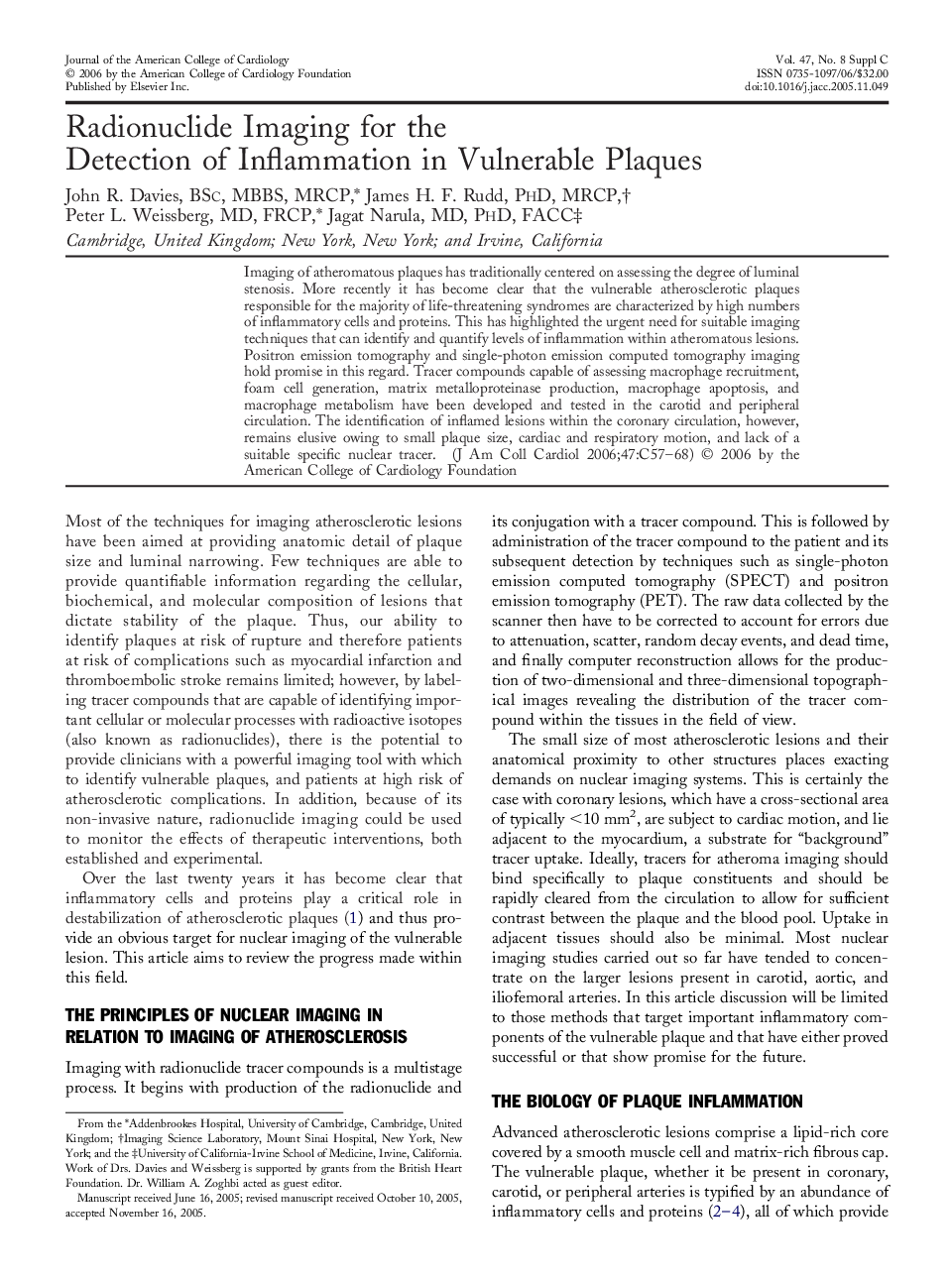| Article ID | Journal | Published Year | Pages | File Type |
|---|---|---|---|---|
| 2954026 | Journal of the American College of Cardiology | 2006 | 12 Pages |
Imaging of atheromatous plaques has traditionally centered on assessing the degree of luminal stenosis. More recently it has become clear that the vulnerable atherosclerotic plaques responsible for the majority of life-threatening syndromes are characterized by high numbers of inflammatory cells and proteins. This has highlighted the urgent need for suitable imaging techniques that can identify and quantify levels of inflammation within atheromatous lesions. Positron emission tomography and single-photon emission computed tomography imaging hold promise in this regard. Tracer compounds capable of assessing macrophage recruitment, foam cell generation, matrix metalloproteinase production, macrophage apoptosis, and macrophage metabolism have been developed and tested in the carotid and peripheral circulation. The identification of inflamed lesions within the coronary circulation, however, remains elusive owing to small plaque size, cardiac and respiratory motion, and lack of a suitable specific nuclear tracer.
